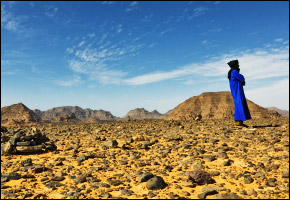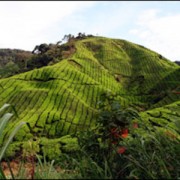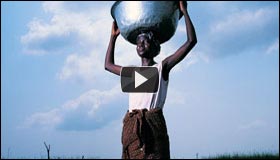Peter Gleick: The California Drought (2007-2009) – Myth Versus Reality
It has been a wet year. Very wet. But remember the drought? California has just come out of a bad three-year drought. 2007, 2008, and 2009 were dry or “critically dry” according to official drought categories for most of the state. Past droughts have been both more severe (1977-1978) and longer in duration (1987-1992) than the most recent drought, but this recent drought was considered bad enough to be declared a statewide “drought emergency.”
But how bad was it, really?
California’s three-year drought had complicated and serious impacts that have been poorly understood and often misreported. Some impacts were expected; some now appear to have been exaggerated for political purposes, and some were surprising and underreported. A new, comprehensive assessment of the 2007-2009 California drought has just been completed by the Pacific Institute, using new and updated official data from local, state, and federal agencies, farmers, energy utilities, and others. The analysis (available free: Impacts of the California Drought from 2007-2009), focused on three drought-sensitive sectors: agricultural production, energy production, and ecosystem health.
The public perception, fed by the focus of media coverage, is that the drought severely harmed California’s agricultural community. The good news is that this turns out to be wrong. Local and regional impacts varied widely, but overall California farmers proved themselves to be flexible and resilient. Farmers and irrigation districts coped with regional reductions in water availability with strategies like increased reliance on local groundwater, temporary water transfers, short-term fallowing, and shifting cropping patterns and types, and they benefited from strong markets for California crops.
As a result, several crops saw record annual levels of production, such as almonds, tomatoes, and lettuce, and the total value of California’s agricultural products actually broke records in all three years of the drought. According to California’s Department of Food and Agriculture (2010), “The state’s agricultural sales for 2009 were the third highest recorded, behind only 2008 and 2007.” Crop yields remained high throughout the drought period, only dropping below 2006 levels (a wet year) once and for a single crop category (field and seed crops) in the last year of the drought.
The report also makes clear that agricultural impacts varied widely from farm to farm, county to county, irrigation district to irrigation district, reflecting the reality of the uneven distribution of water and water rights. For example, priority water contractors received 100% of their supply of Central Valley Project water throughout the drought, while some junior water rights holders received between 10% and 50%. Total gross revenue of Fresno County agriculture increased by 2% during the drought years, but gross revenue in neighboring Kern and Kings Counties declined by 9% and 19%, respectively. Fresno, Kern, and Kings Counties all fallowed land at higher rates than normal during the drought, nearby Tulare County did not. In fact, Tulare County harvested more acres in both 2008 and 2009 than it did in 2006, a wet year. The data also suggest that emergency payments from crop insurance programs may not have been distributed to those most affected. For example Kern County seems to have suffered more serious crop losses than Fresno County but received substantially less in total crop insurance and less per policy.
There were also repeated, and wrong, claims of devastating job losses in the Central Valley due to the drought. Unemployment and poverty in this region are indeed shockingly high, but they have been for years, and for reasons other than drought and water shortages. Federal, state, and local employment data revealed that agriculture-related jobs were not disproportionally reduced in areas experiencing water-supply restrictions during the drought. The Great Valley Center reported that agricultural jobs actually grew 2% between 2003 and 2009, while construction, trade, transportation, industry, manufacturing, and financial sector jobs all dropped dramatically due to the recession. As Dr. Juliet Christian-Smith, the report’s lead author notes, “These data show that unemployment in the San Joaquin Valley is a long-term problem, not simply the result of the recent drought. The poverty rate in the southern San Joaquin Valley — ironically one of the highest-grossing agricultural regions in the world — has been consistently above 20% for a decade. Hunger, homelessness, and other signs of poverty are real and happening, but they are happening in both wet years and dry ones. Genuine efforts to address chronic poverty in the region are needed.”
Less frequently reported were substantial economic and environmental impacts to the state’s energy production and aquatic ecosystems.
California hydropower production declined significantly during the drought years as water flows dropped, with both economic and environmental costs. Much of this lost hydropower was made up through the purchase and combustion of natural gas, costing California ratepayers an additional $1.7 billion and producing an additional 13 million tons of carbon dioxide (approximately a 10% increase in average annual CO2 emissions from California power plants), along with substantial quantities of other pollutants that are known triggers for asthma and contributors to the formation of smog.
California ecosystems also suffered, though those impacts are not well measured or monitored. Among the impacts noted in the report: the Pacific Coast salmon fishery was closed in 2008 and 2009 costing around 1,800 jobs and $118.4 million in income compared to 2004 and 2005. Populations of a wide variety of other fish species, including delta smelt, longfin smelt, American shad, and threadfin shad fell to record lows.
In addition, many of the state’s environmental flows requirements went unmet during the drought period, affecting aquatic ecosystems and decreasing protections for endangered species. The salinity in the Bay-Delta in 2008 was the highest on record since 1992, reducing water quality for in-Delta users and affecting waterfowl and wildlife refuge and fisheries habitat.
Perhaps the greatest concern highlighted in the Pacific Institute report was that many of the coping strategies used to provide short-term relief will not work in the longer run. For example, as many farmers turned to groundwater for supplemental supply, the average groundwater depletion rate in the San Joaquin Valley doubled; in the Westlands Water District, where surface cutbacks were strongly felt, groundwater pumping was 19 times greater in 2009 than in 2006. This overdraft cannot be sustained during a longer drought and impacts to farmers would grow.
The report makes a wide range of recommendations to help the state prepare for future droughts. In particular, we suggest putting in place strategies capable of addressing the risks of longer and more severe water shortfalls, such as enhancing groundwater recharge and storage in wet years, establishing longer-term water transfer programs and systems for monitoring and evaluating those transfers, restoring critical ecosystem flows and habitat, improving water efficiency, planting drought-resistant crops, adjusting grazing schedules and intensity, improving soil-moisture management, expanding energy conservation and efficiency programs, and diversifying the state’s energy portfolio with a focus on renewable energy sources such as distributed solar and wind.
The full report, the executive summary, and a short video, are available free at http://www.pacinst.org/reports/california_drought_impacts/
Peter Gleick









Peter,
First, thank you for an always educational site. But in making suggestions about the longer term water issues, how is it possible to miss one enormous driver of water consumption in CA – population/development? Isnt this the driver of the nexus of water use, habitat loss and productive farmland loss? If your response is to focus on things we can control now, then leaving population control of that factor off the table makes sense. But in the long run, isnt it true that the inflexible load of more, more, more housing has to be curtailed if we are to come into any sort of balance with nature’s carrying capacity?
I see I am late to the party, nevertheless I must point out that much of what kevin nelson had to say re: correlation of water loss and population/development is a real and ongoing problem, solved, in the village in which I live.
We get our water from an aquifer which is always alarmingly low. The village has in place a solution to *our* problem getting worse. There is in place a mandated no-growth policy until the aquifer is at a level which will support a larger population. Until that time comes, no water meters will be issued. No water meter, no building. Since the aquifer has no way of filling to new levels, those levels which will support a growth in population, the ban on building, and population growth, is essentially permanent.
I admit that our central CA. coast village, full-time population of about 3500 is an anomaly and the solutions which work so beautifully here are not so easy to implement in a city of any size. It remains, however, to be a sensible solution to the depletion of many resources, not just water, and in various guises could be scaled to work in cities of any size at all.